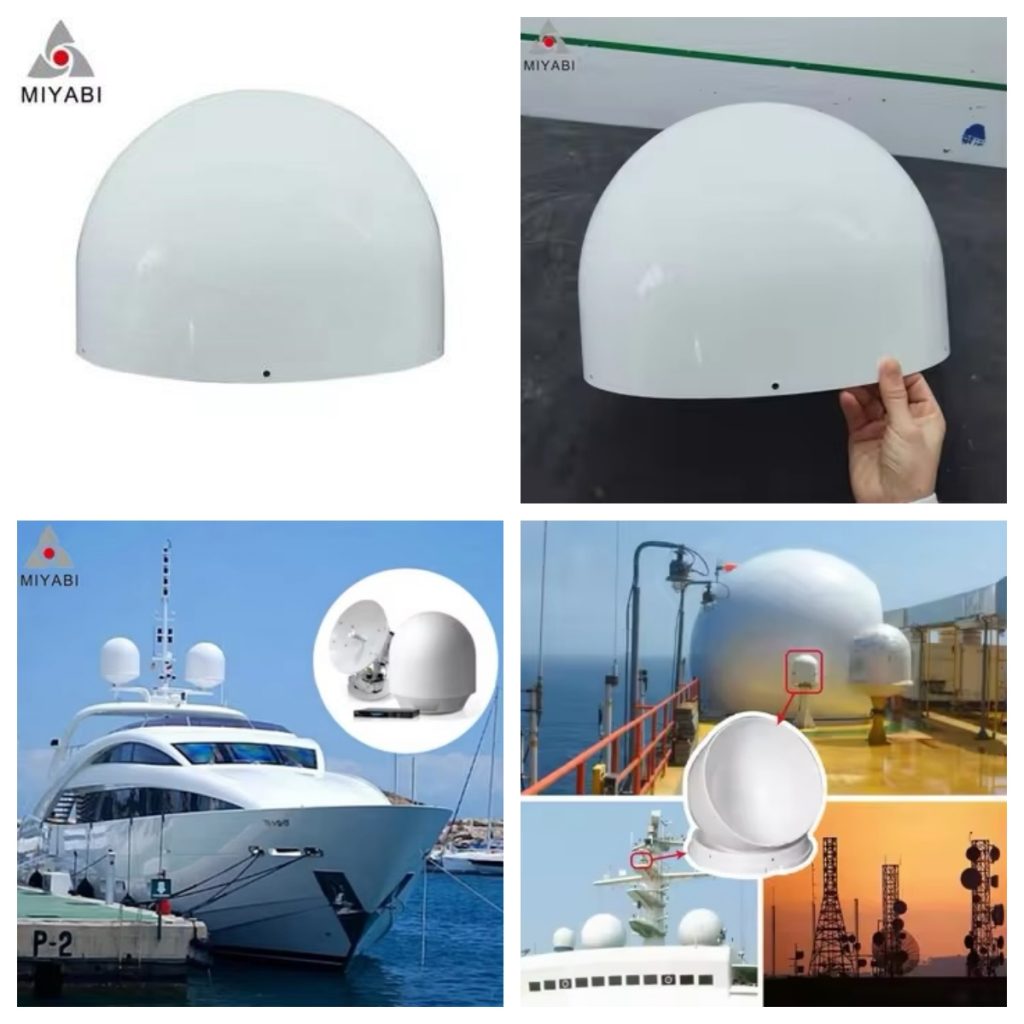With the rapid development of modern communication technology, radome as an important component, its performance directly affects the signal transmission effect. FRP radomes are ideal for improving signal transmission because of their superior material properties and design advantages.

- Material characteristics
FRP (Fiber Reinforced Plastic) is a composite material, mainly composed of resin and glass fiber. Its key advantages include:
Lightweight and high strength: Compared to traditional materials (such as metals), FRP is lighter and has high tensile and compressive strength.
Excellent electrical properties: The dielectric constant of FRP is usually low, which helps the effective propagation of the signal and reduces the signal loss.
Corrosion resistance: FRP has good resistance to most chemicals and weather conditions, and is suitable for outdoor and harsh environments.
- Signal transmittance
By optimizing the material ratio and hierarchy, the signal transmission of FRP radomes is improved:
Multi-layer structure design: Multi-layer composite materials are used to optimize the thickness and arrangement of each layer to minimize signal attenuation.
Wave matching technology: The use of wave matching technology to ensure that the radome and the transmission and reception frequencies match, improve the efficiency of signal transmission.
- Weather resistance and life
FRP radomes are designed with environmental considerations in mind:
Anti-uv radiation: Anti-UV additives are added to the material to effectively prevent aging and performance degradation caused by ultraviolet light.
Temperature change adaptability: FRP has a strong ability to adapt to temperature changes and can work stably in the range of -40°C to +80°C to ensure signal continuity.
- Design flexibility
Individual customization: The shape, size, color and function of the radome can be customized according to different installation environments and needs.
Modular design: Modular design can be carried out according to different functional requirements (such as signal enhancement, anti-interference, etc.) for easy maintenance and upgrade. - Environmental protection and sustainability
Use of renewable materials: The R&D team is exploring the use of renewable materials and environmentally friendly resins to reduce carbon emissions in the production process.
Life cycle assessment: Through the assessment of the entire life cycle of the product, to ensure that all aspects of production to waste are in compliance with environmental standards.
Practical application case
Urban infrastructure: In urban environments, FRP radomes are widely used in 5G base stations to help improve signal coverage and quality.
Remote area communication: In remote and extreme weather conditions, FRP radomes perform well, providing reliable communication support for agriculture, mining and other fields.
Future development direction
Smart Radomes: Combined with iot technology, future radomes will likely integrate sensors to monitor signal quality and environmental changes in real time.
Research and development of new materials: Explore the application of other high-performance materials, such as graphene composites, to further improve the signal transmission effect and durability. - CONTACT US
- E-mail:[email protected] If you are interested in any of fiberglass products, please contact me by email and we will be happy to quote our lowest price as soon as we receive your detailed request.




